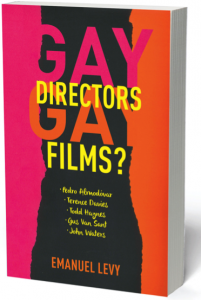L.A. Independent Film Fest, April 18, 1998–
A rather blunt, simplistic psychology informs Richard Schenkman’s sophomore effort, Went to Coney Island on a Mission from God…Be Back by Five, an ambitious but sprawling tale of friendship, centering on three Brooklyn guys as they mature from childhood to young adulthood. Though intermittently engaging and decently acted, the movie suffers from a repetitive format, with too many shifts in time that prove laboriously disruptive. Pic might not be accomplished enough to warrant theatrical distribution, but it should easily travel the regional festival road.
As he showed in his first film, the uneven but occasionally funny and poignant The Pompatus of Love, Schenkman is intrigued by the fears and anxieties that define the American male psyche. Influenced by Barry Levinson’s seminal comedy Diner, and characterized by the same structural problems that marred Levinson’s overblown Sleepers, the similarly-themed, character-driven Went to Coney Island attempts to mix elements of a comic, quirky tale with a more serious examination of what constitutes true friendship.
Yarn begins with the random meeting of Stan and Daniel as children on a Brooklyn street. It then jumps ahead to the same figures at the age of 12, adding a third buddy, Richie, and a girl, Gabby, which of course changes the group dynamics. Most of the story, however, centers on the trio of Daniel (Jon Cryer), Stan (Rick Stear), and Richie (Rafael Baez) as high-schoolers and young adults.
The premise of the narrative–and excuse to engage in a close anatomy of the meaning of camaraderie–is the disappearance of Richie. Rumor has it that their childhood chum has been seen, apparently insane, at the amusement park on Coney Island. Though they have lost touch over the years, Stan and Daniel decide to embark on a trip to find their missing friend. The search also gives them a “legit” reason to skip out on their respective unfulfilling jobs; Daniel works at a pawn shop and Stan at a pizza parlor.
Structured as a serio-comic road movie, what ensues is a sentimental meller with the requisite ingredients of revelation of secrets, betrayals and apologies, self-discovery–and moral lesons. Trip is taken on a cold wintry day, which endows the tale with a bleak, melancholy ambience and the gloom visuals of an empty, desolate amusement park otherwise known as a glittering and vibrant fun place.
In their travels, the couple comes across a philosophical skee-ball attendant, a most unlikley pair of gay lovers on the verge of breaking up, a photographer with a tale of woe, a compassionate waitress, and a freak show at which they are the only spectators.
Poorly integrated into the proceedings are flashbacks of the three friends at different phases of their lives. We see how Richie was ridiculed by his girl based on a bad sexual incident (later, it’s intimated he is gay), how Daniel betrayed Richie’s trust by sleeping with the same girl, how Richie forever blamed himself for the accidental death of his younger sister, how he found refuge as a homeless man living a poor, miserable life under the boardwalks. Disclosures are also made about the other two males, such as Stan’s financial troubles and descent into alcoholism, which terminate his relationship with the beautiful Gabby (Ione Skye).
The constant transitions from present to past (and back again) prevent a more direct emotional involvement and give the film a tedious structure and an increasingly dreary tone. Helmer Schenkman also has trouble in balancing the various moods of his tale, which abruptly and awkwardly shifts from broad comedy to emotionally-wrenching melodrama to sheer pathos, specifically in the last reel, when the duo rescue Richie and bring him to a clinic.
In the lead roles, Jon Cryer, who’s also credited as co-scripter and co-producer, Rick Stear and Rafael Baez give proficient performances that serve the material well, though they can’t elevate it to the level of poignancy and depth intended by the director. Tech credits are serviceable without being exceptional.











